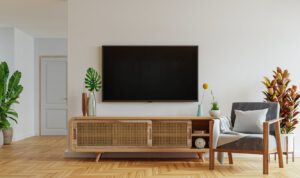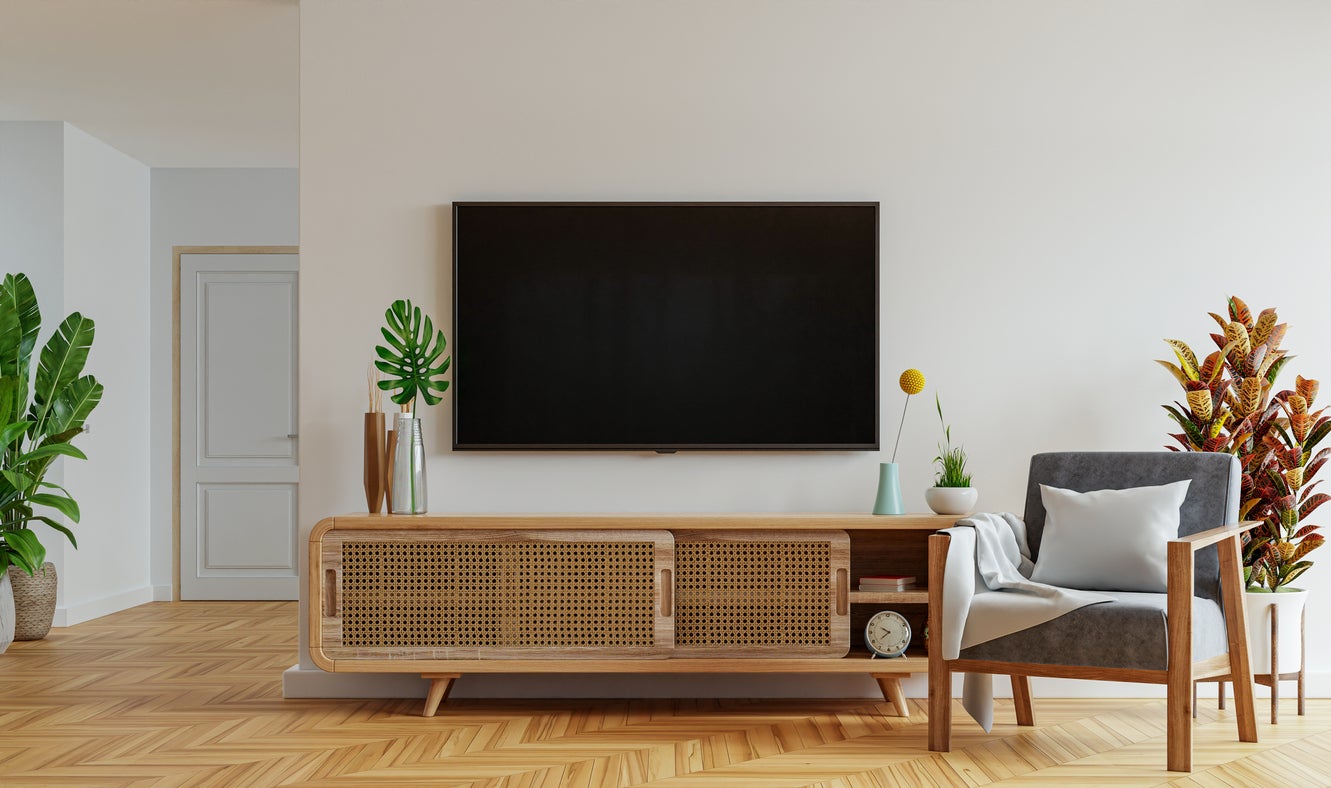When properly installed, TV Mounting on a wall can be a great addition to any room. It can also be a safety hazard if not secured to the wall or studs.
Use a stud finder to locate the studs on the wall where you want to mount your TV. Then mark the location of each stud.
Whether you’re upgrading to a bigger TV or simply want to free up space in your entertainment center, wall-mounting your television is a simple DIY project that can save you money and headaches. However, it’s important to understand the process before you begin in order to avoid mistakes that can leave your TV crooked on the wall or even hanging off the wall completely.
First, you’ll need to select the right mount for your set. This comes down to two main things: what size of TV the mount can accommodate and where you plan on mounting it. Most of the selections on our best TV mounts list will work with most modern sets, but you should check your specific set’s model and dimensions before you buy anything.
Once you’ve chosen a mount, you’ll need to make sure that the template provided with your mount will fit over the studs in your wall. The easiest way to do this is to tape up the mount template, then use a level to line it up horizontally and vertically (the location of the studs will dictate where you can place your TV, so make sure you know that before you start drilling holes).
If you don’t have a level, you can also try using a pencil to mark the locations where the studs should go on the wall. Then, drill the pilot holes, which are just big enough for your mounting screws to fit through. You’ll need a carbide-tipped masonry bit for this and a standard Phillips-head drill bit for driving the mounting screws.
Next, you’ll need to hold the mount up to the wall and use a level to make sure that it is level. If it’s not, you may need to use a screwdriver to loosen the screws in the mount template and move it until it is. Be sure to tighten the screws firmly once everything is in place. You’ll also need a carpenter’s level for final checks before you’re finished. This will keep you from ending up with a crooked TV that’ll leave you wondering where the problem is.
Choosing a Mount
There are a lot of different TV wall mounts available. Narrow down the options by determining your own viewing needs and the room in which you intend to mount the TV. To start, decide whether you want your TV to have a fixed or moving position. Once you have done this, you can narrow down the choices by evaluating features like the ability to swivel or tilt the TV and wire management options.
Then, be sure the mount is rated for the weight of your TV. All major brands will list the suggested weight limits for their mounts. Sticking to these restrictions will prevent your mount from sagging under the weight of a heavy TV or, worse yet, failing mechanically and causing damage or injury.
Another consideration is the mounting location and height. Make sure the mount can withstand the weight of your TV and any other equipment you plan to install (like sound systems or video game consoles). You may also need to install an electrical outlet where the wall mount will be mounted. It is a good idea to consult an electrician before beginning any electrical work.
Once you have settled on the location, use a stud finder to determine if there are studs in the wall where you plan to mount your TV. If there aren’t studs, it will be difficult to secure your mount and could lead to structural damage.
Next, choose a mount with a VESA pattern that matches your TV. This will ensure that the mount can support your TV’s screen size and type. Look for this information in the TV’s manual or on its manufacturer’s website.
Finally, consider the type of movement you want your TV to have. You might need a flat mount for a fixed position or a swivel or tilting mount for a more adjustable position. Finally, evaluate the wire management options offered by each mount to determine which one will work best for you. There is nothing that will detract from the look of your new TV installation faster than loose wires hanging down from the mount. Look for mounts that offer channels or clips in the body of the unit to keep wires neat and tidy.
Preparing the Wall
If you want to mount your TV to a wall, it’s a good idea to start with some planning. This can help ensure that the project is successful and also minimize the possibility of crooked or uneven mounting, which can detract from your viewing pleasure.
First, decide where you want to mount the TV and select an appropriate location. Be sure that you choose a spot that allows for comfortable seating and consider the optimum viewing angle and height for your TV (see our guide on the Best Place to Mount a Television for more tips).
Next, determine what type of wall you have. Drywall is the most common wall material, and fortunately, most mounts are designed to work with it. However, to support the weight of the TV and the mount itself, it’s important that your wall have studs (vertical pieces of wood) behind it. These will provide a strong anchor point, and they’ll keep your mount from falling off the wall.
If your home is an older type of building, it may have solid brick walls or concrete breeze blocks. These require special care and extra fixings, so it’s best to consult an expert before attempting to mount a TV on them. Newer homes and some conversions are often constructed from timber frames or plasterboard. Using these types of walls can be tricky as they don’t have the same structural integrity as a stud wall.
Once you’ve determined the type of wall, it’s time to prepare it for the mounting process. Begin by removing any electrical outlets or junction boxes from the area where you plan to mount the TV, and use a stud finder to locate studs in the wall. Be sure to mark the stud locations with a pencil so that you know where to drill your pilot holes for the mounting screws later.
If you don’t have a stud finder, remove the cover from an outlet or junction box and poke around with your finger to feel for any hollow spots. You can also use a screwdriver to test the wall by driving a screw into it. If it holds the screw securely, then you have a solid surface for your TV mount.
Mounting the TV
A mounted TV brings a sense of style to the room and elevates the viewing experience for everyone watching. It can also increase the amount of usable space in a room and help avoid the annoyance of wires running across the floor.
Before you do anything, make sure to turn off any circuit breakers in the area where you plan to mount the TV. You’ll also want to have a partner to help with this project and ensure that all measurements are accurate. You’ll need a stud finder, a power drill, and tools like a tape measure, screwdriver, and level to complete this project successfully.
Begin by locating the wall studs where you want to mount the TV. A stud finder is the easiest way to do this. Once you’ve found the stud locations, mark them on the wall with a piece of tape.
Most TV wall mounts come with a mounting template to help you determine where the screw holes will go on the back of your TV. The mounting template may include multiple hole options to compensate for the location of the studs on your wall. If not, you can usually use a ruler to estimate the position of the mounting holes.
The next step is to attach the mounting bracket to the back of your TV. The bracket will have screw holes that line up with four of the holes on the back of your TV. It is important to be aware of how far apart the studs are in your wall when mounting a TV, so you can purchase a mount that fits the distance between each stud.
Hollow-wall drywall mount installations can be limited to total weights (TV, mount, and all accessories) of 100 pounds or less. For a safe installation, use toggle bolts instead of regular screws on these installations.
If you have a smart TV, the height of the wall mount may impact the quality of the WiFi signal. It’s worth experimenting with different positions to see what works best for your home. Also, consider any other obstacles that could get in the way of a clear signal, such as nearby chimneys or large furniture pieces.
